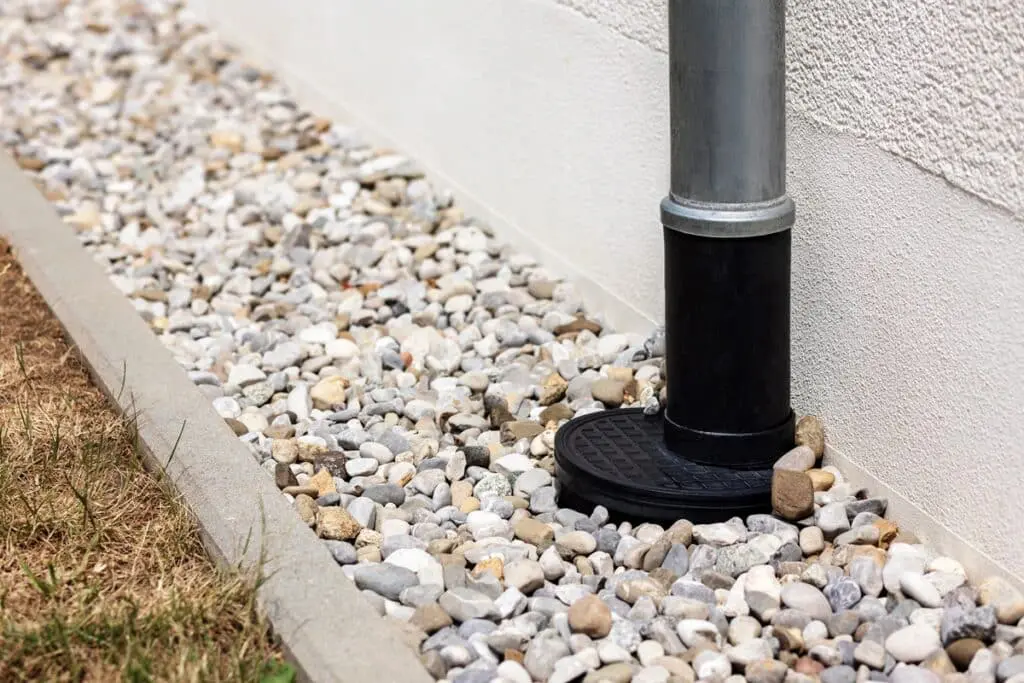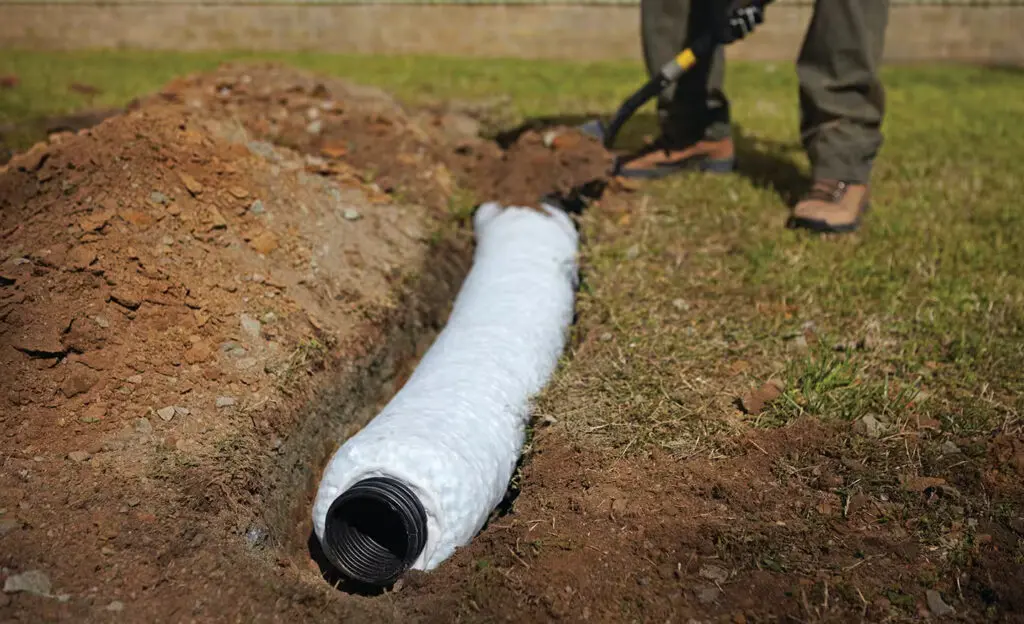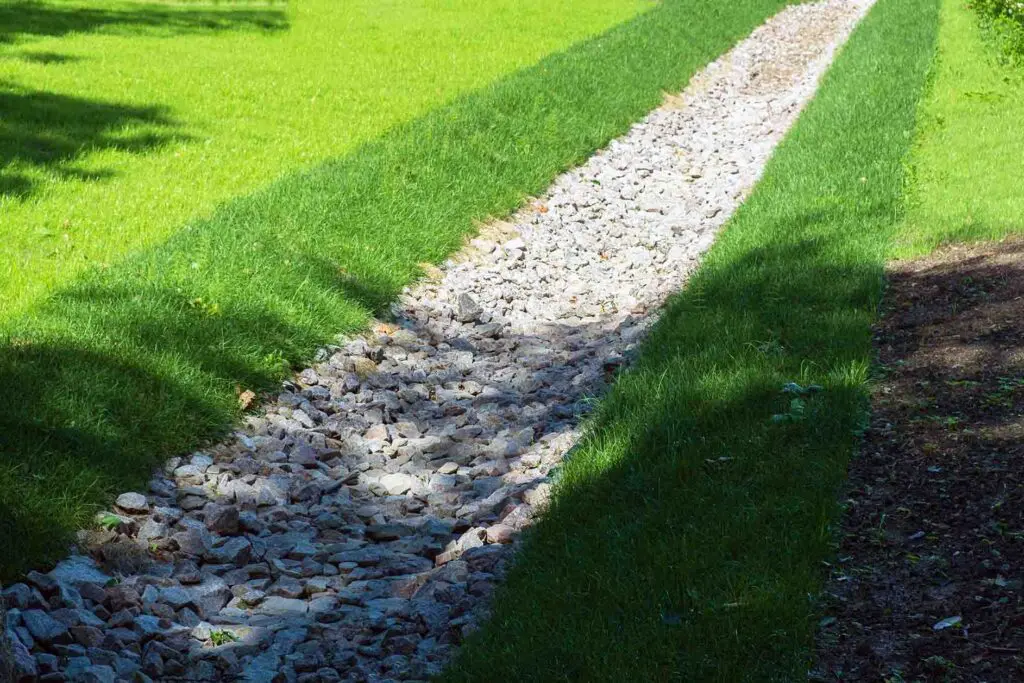What Does a French Drain Look Like? See the Visual Breakdown
If you’re dealing with drainage problems in your yard, a French drain system could be the perfect solution.
Knowing what a French drain looks like and how a French drain works can help you make an informed decision.
This guide covers its components, appearance, and french drain installation process, showing you how it can effectively manage water around your property.
What does a French Drain Look Like?
A French drain looks like a trench filled with gravel and a perforated pipe, often hidden beneath the surface. It directs water away from areas like basements or yards to prevent flooding.
Key Takeaways
- A French drain is designed to redirect water away from areas that are prone to flooding or waterlogging.
- The appearance of a French drain can vary depending on the materials used and the area where it’s installed.
- Proper installation ensures that the drain effectively channels water, preventing erosion and other issues.
What Is a French Drain?

A French drain is a type of drainage system that helps to manage excess water by redirecting it away from vulnerable areas of your property.
It consists of a trench filled with gravel, with a perforated pipe running through the gravel to carry water away from the area.
This type of drainage system is often used to address issues like standing water, soggy lawns, or areas prone to flooding.
Unlike traditional surface drains, French drains are installed below the surface of your yard, making them less visible and a more discreet way to manage water flow.
The main goal of a French drain is to relieve areas where water tends to pool, preventing erosion and the potential for water damage to your home’s foundation or garden.
What Does a French Drain Look Like?
The physical appearance of a French drain can vary based on the materials used and the specific needs of the property.
However, there are some common elements that all French drains share.
1. The Trench
The first thing you’ll notice when a French drain is installed is the trench that’s dug into the ground.
The trench is typically around 6 inches to 12 inches wide and can be as deep as 18 to 24 inches.
The depth and width depend on the size of the area needing drainage and the amount of water that needs to be redirected.
2. Gravel Layer
Once the trench is dug, a layer of gravel or crushed stone is laid along the bottom.
This layer allows water to filter through easily and provides a solid base for the perforated pipe that will go in next.
The gravel ensures that water has plenty of space to flow towards the pipe and prevents any clogs or blockages from forming.
3. Perforated Pipe
At the centre of the trench sits a perforated pipe, which is usually made of PVC or corrugated plastic.
The pipe has small holes or slits along its length that allow water to enter the pipe from the surrounding gravel and be carried away to a designated drainage point.
The pipe is laid with the holes facing downwards, so the water flows into the pipe rather than out of it. The pipe is also sloped slightly so that gravity helps move the water through the system.
4. Geotextile Fabric
In many cases, a geotextile fabric is laid over the gravel and pipe before the trench is filled back in.
This fabric acts as a filter to prevent dirt, soil, and other debris from entering the gravel and clogging the pipe.
It ensures that only water flows into the system while keeping the gravel and pipe free from blockages.
5. Covering the Trench
Finally, the trench is covered with soil or sod to restore the appearance of the yard.
Depending on the location of the French drain, the area may be reseeded or replanted, making the system almost invisible from above.
In some cases, decorative gravel or stone may be used to cover the trench for aesthetic purposes.
Where Are French Drains Installed?

French drains are versatile and can be installed in various locations around your home or garden. Here are some common places where you might see French drains:
1. Around the Foundation
One of the most common places to install a French drain is around the foundation of your home.
If your basement is prone to flooding or water seepage, a French drain can help direct water away from the foundation and prevent damage.
2. In the Yard
French drains are also useful for managing water in the yard, especially in areas where water tends to collect or pool.
Installing a French drain in your garden or lawn can prevent standing water and protect your landscaping.
3. Driveways and Walkways
If your driveway or walkways are frequently affected by puddles or runoff, a French drain can be an effective solution.
By installing the drain along the edge of the driveway, you can direct water away from these areas and prevent erosion or flooding.
Benefits of Installing a French Drain

French drains are an excellent solution for managing excess water and preventing damage to your property. Here are some of the main benefits they offer:
1. Improved Drainage
The primary benefit of a French drain is its ability to improve drainage in areas prone to flooding or pooling water.
By redirecting excess water away from your property, you can prevent water from causing damage to your foundation or lawn.
2. Prevention of Soil Erosion
Excess water can wash away soil and plants in your garden or lawn. French drains help prevent this by carrying water away from vulnerable areas, reducing the risk of erosion.
3. Protection of Your Property
By preventing water from accumulating around your home or garden, French drains help protect your property from water damage.
This includes protecting the foundation, basement, and even the interior of your home from moisture-related issues.
Frequently Asked Questions
1. How deep should a French drain be?
Typically, a French drain should be at least 6 inches deep, but the exact depth will depend on the area’s drainage needs and the type of soil.
2. Can I install a French drain myself?
Yes, if you have the right tools and knowledge, you can install a French drain yourself. However, for larger or more complex installations, it’s best to consult a professional.
3. How much does it cost to install a French drain?
The cost to install a French drain can range from $1,000 to $5,000 depending on the size of the project, the materials used, and whether you hire a professional.
Conclusion
A French drain is a simple yet highly effective solution for managing excess water around your property.
By understanding its components and how it works, you can ensure that your French drain will perform effectively for years to come.
Whether you’re installing one yourself or hiring a professional, a French drain can help protect your property from flooding, erosion, and water damage.
Consider your needs, plan your installation carefully, and you’ll enjoy the benefits of better water management around your home.
